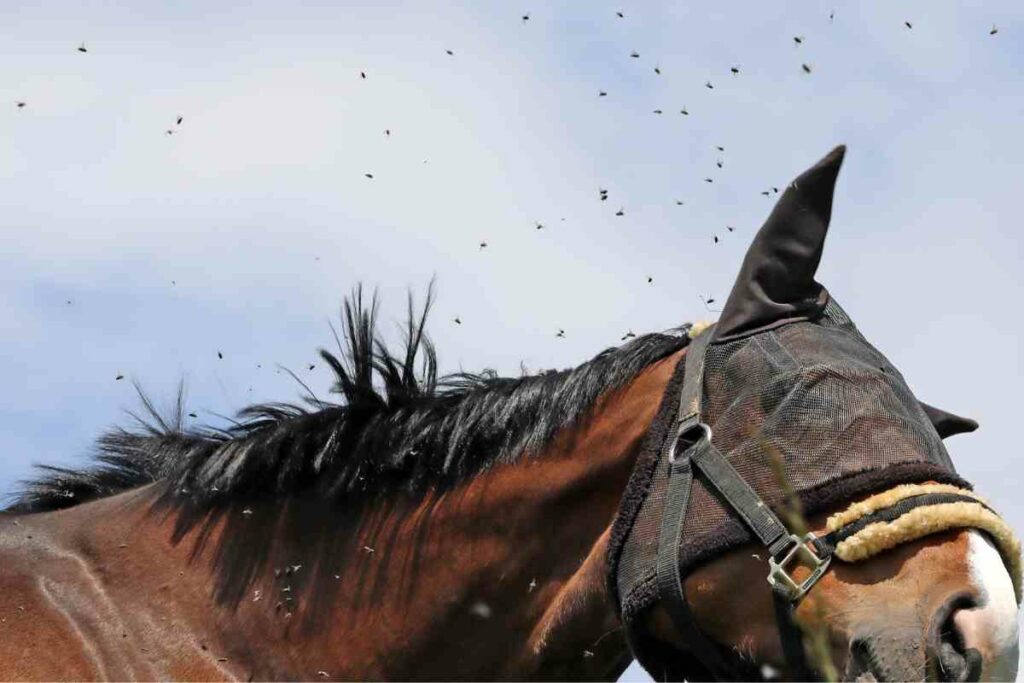Imagine swarms of marauding flies settling on you and crawling over your head and neck.
Flies crawling into your ears, up your nose, and into your mouth if you open it!
Sounds terrifying?
This is what it’s like when folks have ‘bad flies’ in Outback Australia is like and in this short article, we’ll explain why there are so many of them in Outback Australia.
Why are there so many flies in Outback Australia?
The Outback is known for its desolations, but the flies are a horror set apart.
Aussie flies are so bad that Captain Cook hated them and Fly Bay earned its name from 17th-century Dutch explorers for a similar reason.
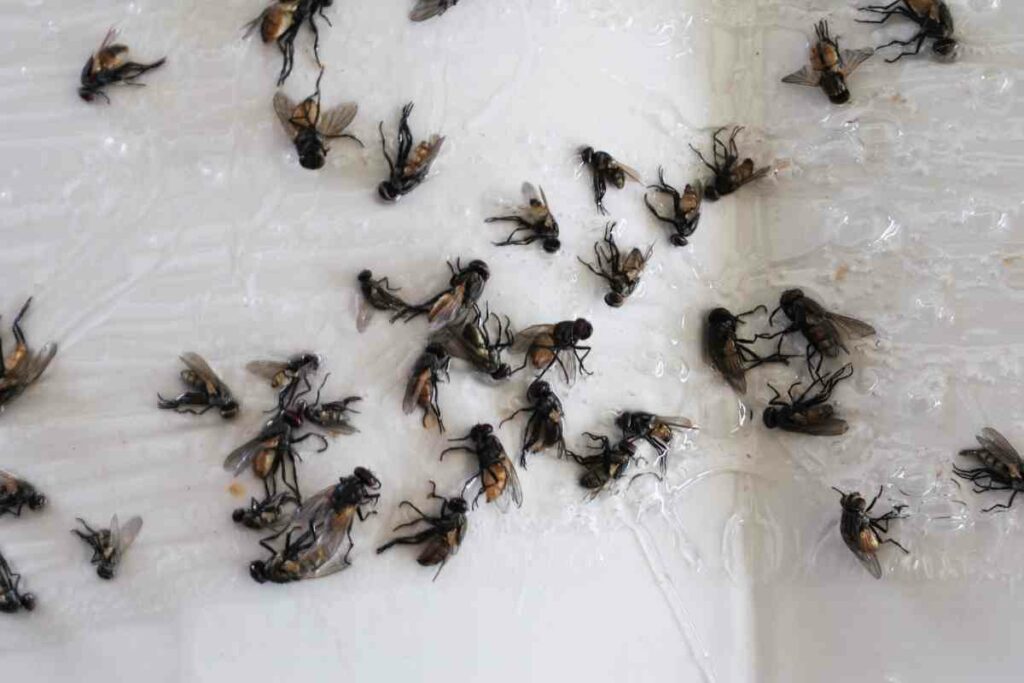
The fly populations near the few human settlements and ranches in the Outback explode seasonally making conditions unbearable for humans and animals in the vicinity.
The reasons for the burgeoning numbers of flies in the Outback include:
- Changing seasons: insect populations are sensitive to the changing seasons and as the cold and rainy winter months transition to the warmth of spring and summer, conditions become right for prolific breeding.
- An abundance of animal dung: Flies have always been the infernal residents of the outback, but the appearance of settlers and ranchers with large numbers of horses, sheep, and cattle have provided these critters with the perfect medium for breeding. Tons and tons of animal manure are a massive driver of the Outback fly population.
- Reduced numbers of dung beetles: Dung beetles can make or break the fly population as they tackle the exposed waste that the flies breed on. With dung out of the way because of the efforts of these beetles, the flies have to find alternative breeding spots. When the numbers of dung beetles reduce, the flies become wearisome.
The Flies of Oz
Flies (Diptera) are one of Australia’s most abundant and diverse species.
Entomologists at the Commonwealth Scientific and Industrial Research Organisation’s (CSIRO) National Insect Collection estimate that Australia has at least 30,000 individual fly species.
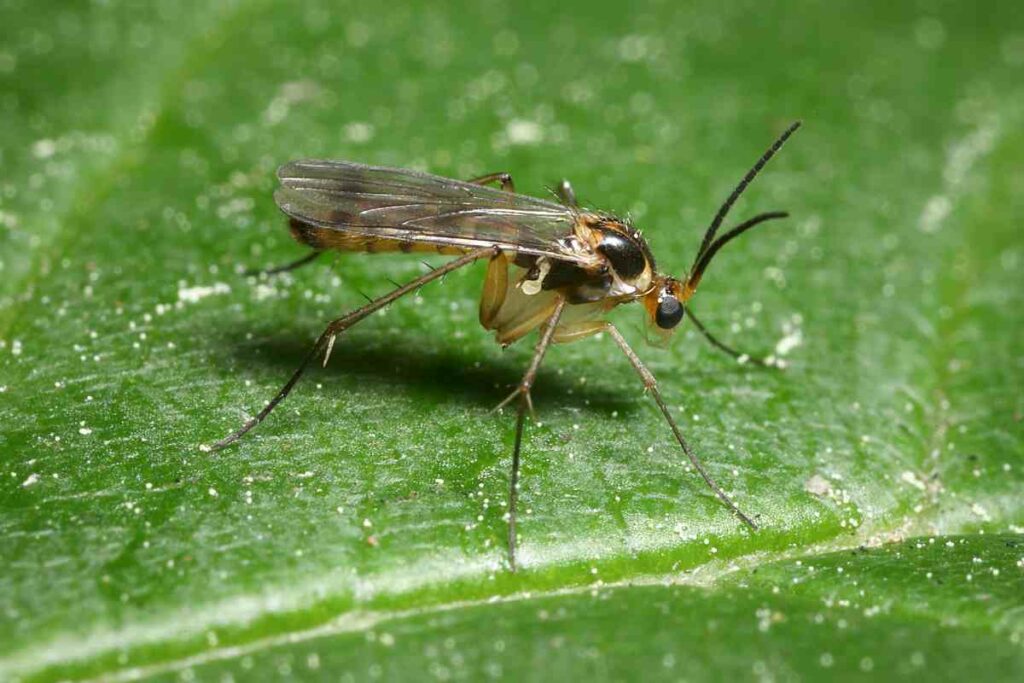
And amazingly many of them are 100% unique to Oz.
Until Now – Only 6,400 species have been described, meaning that what we consider a pest and nuisance is one of the country’s richest ecological resources.
Here are some of the fly species you could swat in the outback on an average day:
- Bombyliidae (bee flies)
- Musca vetustissima (the bush fly)
- Lucilia cuprina (the sheep blowfly)
- Sarcophagidae (flesh flies)
- Psychodidae (drain flies)
- Lacewings
- Fruit flies
- Tabanidae (horsefly)
- Sciaroidea (fungus gnats)
- Culicidae (mosquitos or “mozzies”)
Flies are some of Outback Australia’s most hated pests
The Outback of Australia is famous for the large numbers of pests, dangerous creatures, and frank predators that make it inhospitable.
Despite having nasty species like the Redback spider, Taipan snake, or frank crocodiles wandering the neighborhood, it is the flies that are the biggest nuisance and do the most harm to people and livestock.
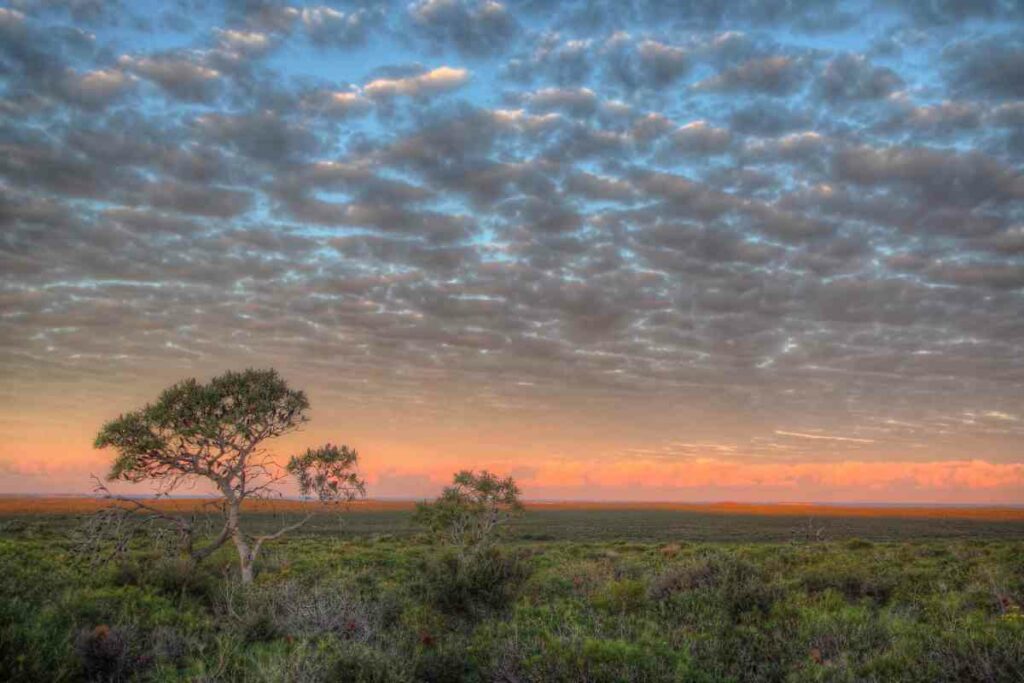
Of course, these insects are disease carriers and in Australia can transmit diseases like:
- Hepatitis A
- Ephemeral fever
- Trachoma
- Diarrhoea
- Typhoid
- and Dysentery
Health Authorities blamed the recent outbreak of Japanese Encephalitis on mosquitoes in New South Wales, Victoria, and Queensland.
The agricultural impact of these flies is also significant.
Huge swarms of biting flies regularly afflict pastoralists in the outback, along with their cattle and horses.
In the Outback – When the flies are bad, animals and people have to be swathed in fly nets for life to be bearable.
And it’s not just the numbers, it’s the species of flies too.
A boom in the fruit fly population can decimate harvests in the $13 billion horticulture industry.
But flies are essential to the unique ecology of Australia
When you’re continuously circled by darting flies for hours on end, you may feel like it would be great to eradicate them entirely.
But actually, the hard work of flies has made Australia what it is today.
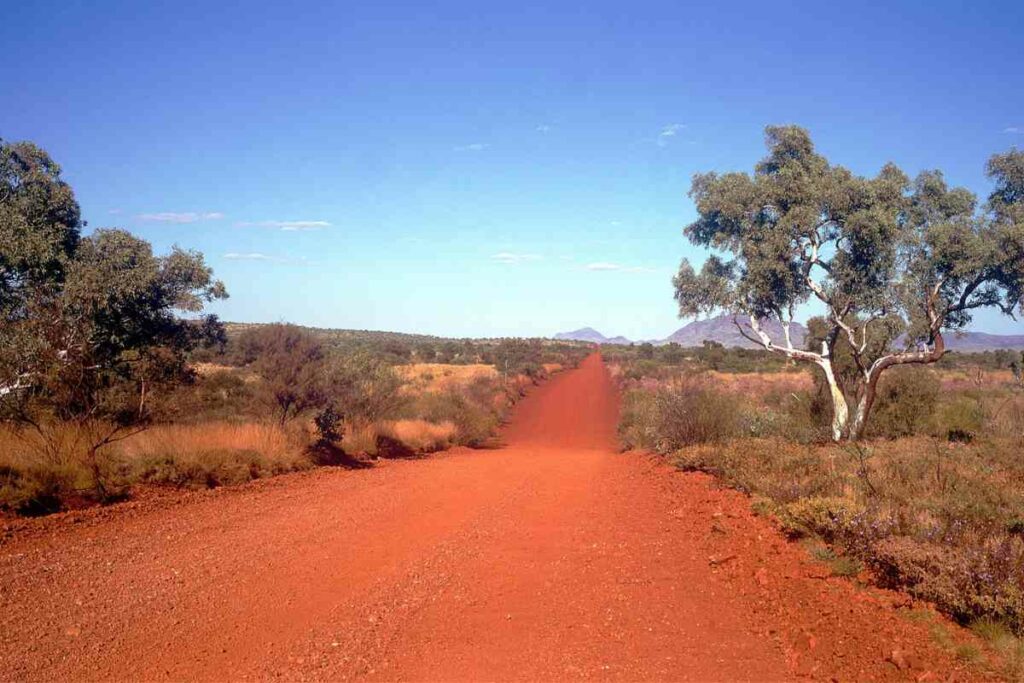
The fly species of Australia are essential to the ecological balance and diversity that makes Australia the beautiful, productive, and unique place it is.
Key functions of Australia flies include:
- Pollination: flies perform at least one-third of the world’s pollination!
- Decomposition and nutrient recycling: fly species including carrion flies play a big role in decomposition. They will lay their eggs on dead flesh and their larvae will consume the rotting material.
- Predation of other pest species (biological control): Flies and their larvae predate and parasitize a wide range of agricultural pests.
- Prey species for other creatures: Aussie flies are big contributors to the food chain with birds, insects, mammals, fish, and amphibians being sustained by them.
And to perform these roles across a continental landmass like Australia, fly numbers have to be huge.
Estimates of tens of trillions of flies don’t cover the scale of the winged army needed to carry out these vital roles.
Humans are a particular target of these winged pests
Annoyingly flies will make a beeline for human settlements and congregate there in large numbers.
Why is this?
In the Outback, there is not much water around. Humans and animals are essential sources of moisture for flies.
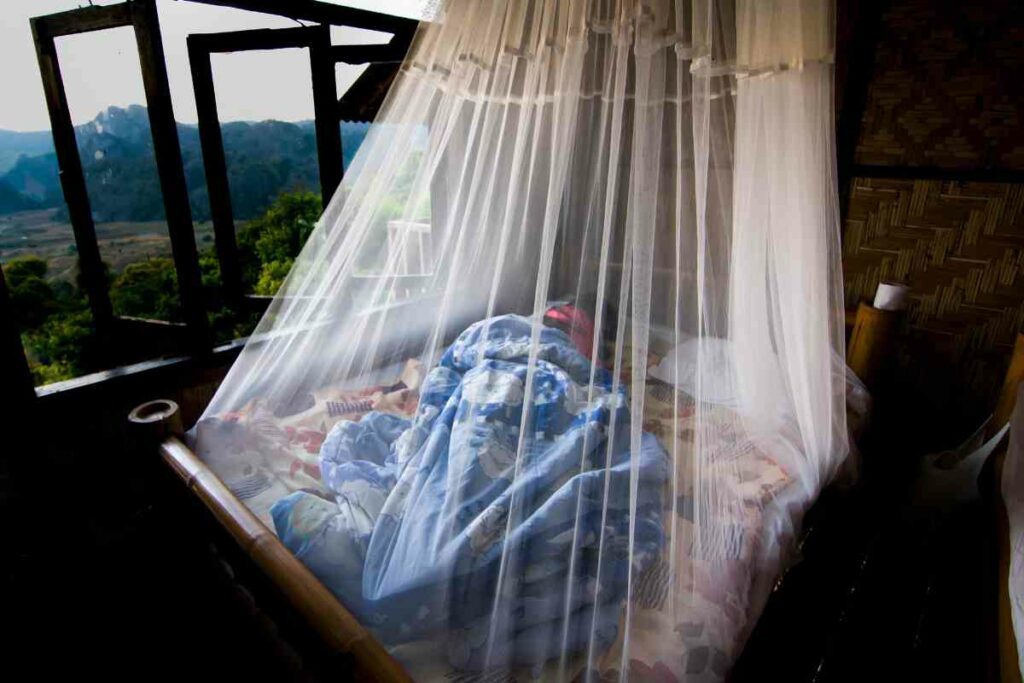
Flies take advantage of the hot dry winds of the Outback to be blown hundreds of kilometers to where people are.
They will crawl all over exposed skin, taking advantage of the electrolyte-rich sweat and moisture in eyes, noses, and mouths!
Check out these handy and lightweight fly nets. Perfect for traveling around Australia.
Dung beetle introductions may help to tackle Outback flies
Australia’s CSIRO dung beetle program has been running since 1966.
Scientists imported foreign dung beetle species, to clear up the animal feces that the flies would breed on.
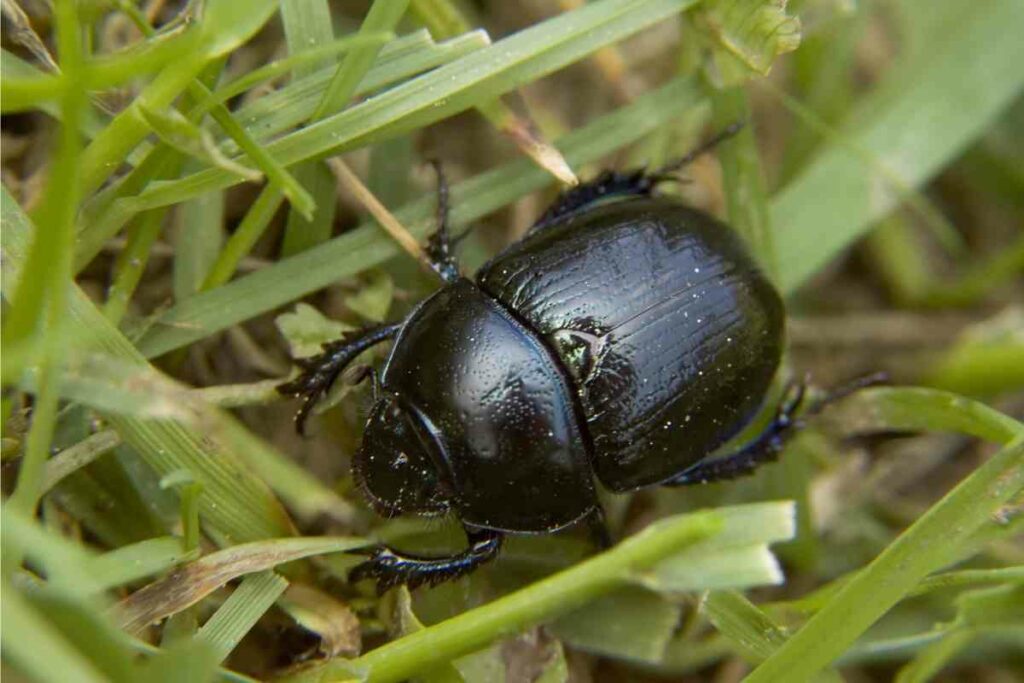
The project was shut down but has recently been revived commercially, to help landowners reduce the number of flies breeding on their land.
Rounding up
As you can see, Australia has a love-hate relationship with its flies.
The regular population explosions of these tricky insects make life hell for humans and animals that get swarmed.
But these pesky flies are also an important part of the Australian ecosystem, meaning that folks will have to put up with them for a long time yet!
- Discover Coober Pedy – Where the TV Show Opal Hunter Was Filmed
- Why Are There So Many Flies in Outback Australia?
- 17 Interesting Bora Bora Facts & Information 2023
- What Time Is It in Bora Bora?
- Mount Otemanu, Bora Bora Ultimate Guide
- Maldives vs Bora Bora – The Best Guide for Couples and Newlyweds 2023 [Updated]


